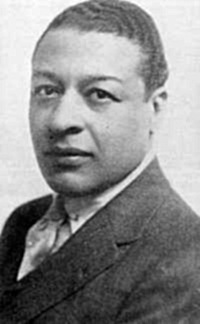
Camille Forbes introduces us to a long-ago world of intense racism in America, but a world where the color barrier was broken on Broadway and a medicine-show performer became a star in "Introducing Bert Williams" [Basic/Civitas Books, 404 pages; Photos, index, extensive bibliography; SRP $27.50].
Born in the West Indies, his dream from childhood was to become a song-and-dance man. From Wild West touring troupes, Williams landed on the Great White Way, where he not only became one of the first blacks to break through but also changed the face of the American stage. Forbes argues that every black performer owes something to Williams, who rose through vaudeville in New York to become a Broadway composer/lyricist, with his first show produced in 1889. He debuted as a performer the following year.
In 1903, he was featured in the first all-black cast on Broadway in the musical farce In Dahomey. The score, not by Williams, consisted of the no-longer politically correct "When Sousa Comes to Coontown." Three years later, he composed and starred in the musical comedy Abyssinia.
In 1910, Williams became the first black star of the fabled revues of beautiful girls, the Ziegfeld Follies. The impresario knew he was making a bold move, and he was severely criticized for integrating the company by many of his investors and audience members. Williams, singing his signature tune "Nobody" and doing rube-style comedy, played on the same stage as Fanny Brice and W.C. Fields - even if his salary wasn't commensurate with theirs. He starred in seven more editions before his death in 1922 at 47.
In spite of his triumphs, Williams was often viewed by the black community with more critical suspicion than admiration because he performed in blackface and that he didn't use his stardom for political or civil rights activism.
He was a remarkable performer, but Forbes, a historian, critic, and performer who holds Ph.Ds in history and American civilization from Harvard and who's an assistant Literature professor at the University of California, San Diego, also offers a realistic glance at Williams' inner turmoil.
Williams was to see fame again on Broadway when his songs were used in Bubbling Brown Sugar and the 1980 revue Tintypes.
[END]
